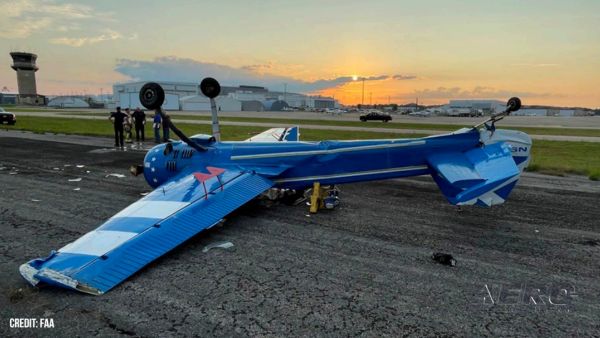Wed, May 03, 2017
Marks A New High Point In Aviation Ties Between The Two Nations
The Executive Director of the European Aviation Safety Agency (EASA), Mr Patrick Ky and the Vice Administrator of the Civil Aviation Administration of China (CAAC), Mr Li Jian held a joined Safety Conference organized by the two organizations last week, bringing together leading CEOs from the European and Chinese aviation industry. The conference marks a new high in aviation ties between Europe and China. These have steadily grown closer over recent years.

In the presence of CAAC Administrator Feng Zhenglin and the European Commission Director General for Mobility and Transport Mr Henrik Hololei, leading members of the aviation community discussed progress on establishing a future Bilateral Air Safety Agreement (BASA). More uniform standards, agreed through the BASA, will make it easier for companies to sell their aviation products in China and Europe, while maintaining the high safety record that both regions benefit from.
Trends defining the future of aviation safety were discussed in the different panels of the conference taking place in Shanghai. Topics included implementing efficient safety management systems for maintenance, new technologies and developments in the field of aircraft navigation systems and efforts to promote the use of rotorcraft more widely in China for essential emergency medical services for example.
Successful joint cooperation initiatives include the bi-annual airworthiness management meeting, a newly established flight standards dialogue between CAAC and EASA that took place for the first time in the same week of the conference and the EU-China Aviation Partnership Project that supports the ongoing dialogues between the authorities and industry with concrete technical cooperation activities.
The conference brought all these efforts together by signing a joint declaration to promote international aviation safety, a letter of intent supporting the implementation of the EU-China Aviation Partnership Project for its second year and the memorandum of cooperation for the newly established flight standards dialogue.
(Image provided with EASA news release. Executive Director of the European Aviation Safety Agency (EASA), Mr Patrick Ky and the Vice Administrator of the Civil Aviation Administration of China (CAAC), Mr Li Jian)
More News
From 2021: The Inside Skinny On What Being An ANN Oshkosh Stringer Is All About By ANN Senior Stringer Extraordinare, Gene Yarbrough The annual gathering at Oshkosh is a right of p>[...]
Pilot Asked The Mechanic To Go For A Test Flight Around The Airport Traffic Pattern With Him For A Touch-And-Go Landing, And Then A Full-Stop Landing On May 7, 2025, about 1600 eas>[...]
From 2010 (YouTube Edition): Skiles Reflects On His Ring-Side Seat To An Historic Event Jeff Skiles, First Officer of US Airways Flight 1549, "The Miracle on the Hudson," was the g>[...]
“The FAA conducted a comprehensive safety review of the SpaceX Starship Flight 8 mishap and determined that the company has satisfactorily addressed the causes of the mishap,>[...]
Fuel Remaining A phrase used by either pilots or controllers when relating to the fuel remaining on board until actual fuel exhaustion. When transmitting such information in respon>[...]
 Oshkosh Memories: An Aero-News Stringer Perspective
Oshkosh Memories: An Aero-News Stringer Perspective NTSB Prelim: Diamond Aircraft Ind Inc DA 40 NG
NTSB Prelim: Diamond Aircraft Ind Inc DA 40 NG Classic Aero-TV: US Airways Jeff Skiles-Making History and Looking To The Future
Classic Aero-TV: US Airways Jeff Skiles-Making History and Looking To The Future Aero-News: Quote of the Day (05.26.25)
Aero-News: Quote of the Day (05.26.25) ANN's Daily Aero-Term (05.26.25): Fuel Remaining
ANN's Daily Aero-Term (05.26.25): Fuel Remaining



